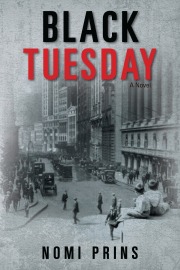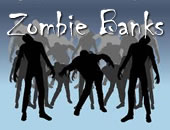Given the current high coolness quotient of anything “zombie,” a webinar about “zombie banks” is guaranteed to pique the interest of even the non-bankers out there. (Kudos to the non-financial types who made it through Part 1 and the discussion of interest rates.) But really, “zombie” is nothing more than a highly picturesque way to refer to something that is kept in motion or presumed viable long after it normally would have expired. “Zombie yogurt,” anyone?To recap Yalman Onaran’s definition in Part 1 of this posting, a zombie bank is a financial institution that continues to exist “even though the investors don’t necessarily believe the book value” of the assets held by the bank. As I write, certain banks in Ireland and Portugal have acquired this taint, and experts are still debating what to do about it. (Hence the reason for the June 5, 2012 webinar offered through GARP, the Global Association of Risk Professionals.)
The fourth and last speaker of the GARP panel on Zombie Banks was the redoubtable Nomi Prins, Senior Fellow at Demos, author of It Takes a Pillage: Behind the Bailouts, Bonuses, and Backroom Deals from Washington to Wall Street, and former managing director at Goldman Sachs. Prins remarked that current conditions are highly conducive to creating zombie banks. “We’ve not had a zero interest rate policy in such a long time,” she said. “This allows zombie bank junkies to receive their shot of capital” every time they experience a “craving.” The assets continue to appear to have value, even though they have next to none. “There’s a larger derivatives market, securities are more complex… the financial system is still unhealthy,” she noted, yet on the surface things eerily appear to be A-OK. (It conjured moments like the lull where birds are chirping on suburban lawns before the zombies rise up in some B-rate movie.)
Prins called for a stricter delineation of “real” versus “speculative” functions within a bank. Prins is also concerned about the widespread and disturbing cycle of banks buying treasury securities and using them as collateral. “Bernanke has made no mention of increasing interest rates,” she said, likely because “he does not want to upset the apple cart.”
 Most recently, Prins said she has been writing a book about the Crash of ’29, Black Tuesday. In the course of researching the background of that period of business insanity, she gained a deeper historical perspective pf current woes. The economic climate at the time that Glass-Steagall was enacted in 1933 was just as bad, if not worse, than now. However, that regulation won the support of many, including Winthrop Aldrich, the president and chairman of Chase National Bank. Prins lauded President Aldrich, who supported the legislation because, he said, “a stable banking sector is so important.”
Most recently, Prins said she has been writing a book about the Crash of ’29, Black Tuesday. In the course of researching the background of that period of business insanity, she gained a deeper historical perspective pf current woes. The economic climate at the time that Glass-Steagall was enacted in 1933 was just as bad, if not worse, than now. However, that regulation won the support of many, including Winthrop Aldrich, the president and chairman of Chase National Bank. Prins lauded President Aldrich, who supported the legislation because, he said, “a stable banking sector is so important.”
Putting the good of the financial system ahead of the narrow interests of a single bank—even if it means greater regulation: now there’s an old idea that may be coming back again. ª
The GARP webinar presentation slides can be found at: http://www.garp.org/risk-news-and-resources/webcasts/on-demand-webcasts.aspx?page=1
Yalman Onaran’s book can be found at: http://zombiebanks.org/
The novel by Prins based on the Crash of ‘29 can be found at: http://www.nomiprins.com/black-tuesday
UPDATE: Headline news February 3, 2014 – Europe on the hunt for ‘zombie banks’

